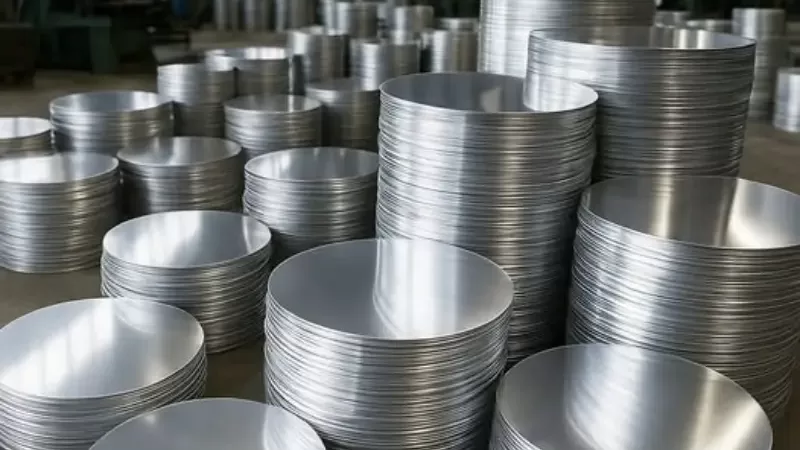1050 1060 1100 Aluminum Circle is widely used in cookware, lighting, and industrial parts. The most common alloys for this purpose are 1050, 1060, and 1100 aluminum. These alloys offer high ductility, smooth surface, and excellent deep drawing performance.
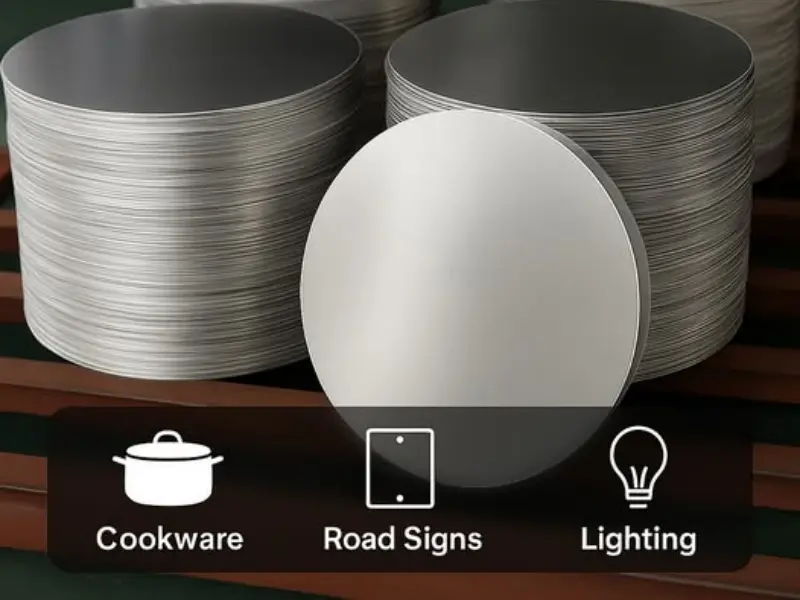
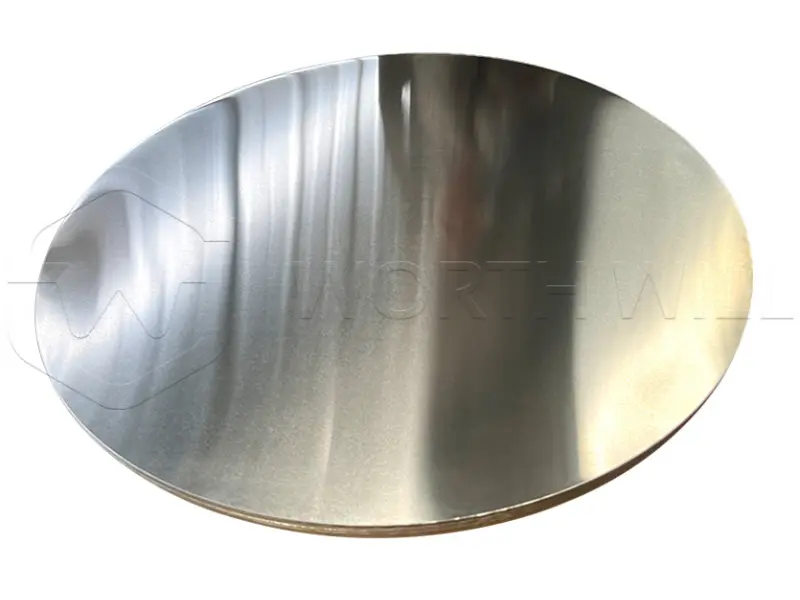
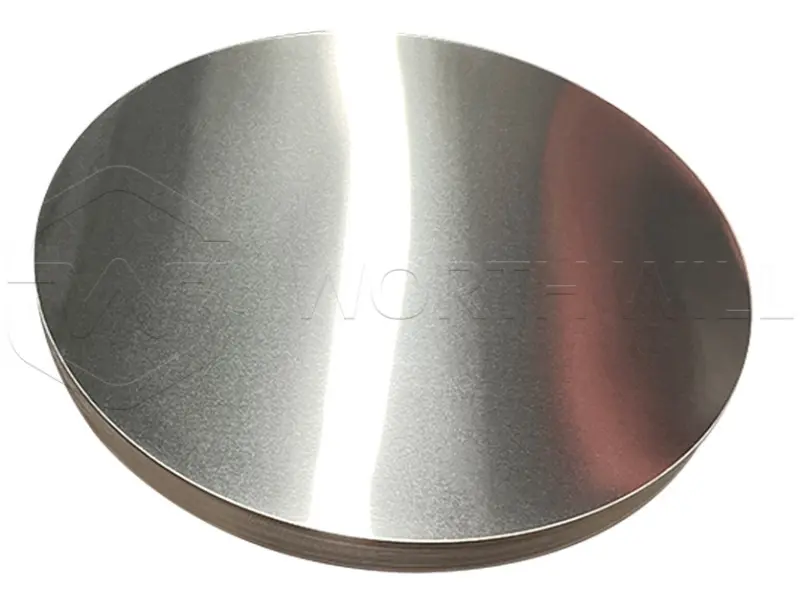
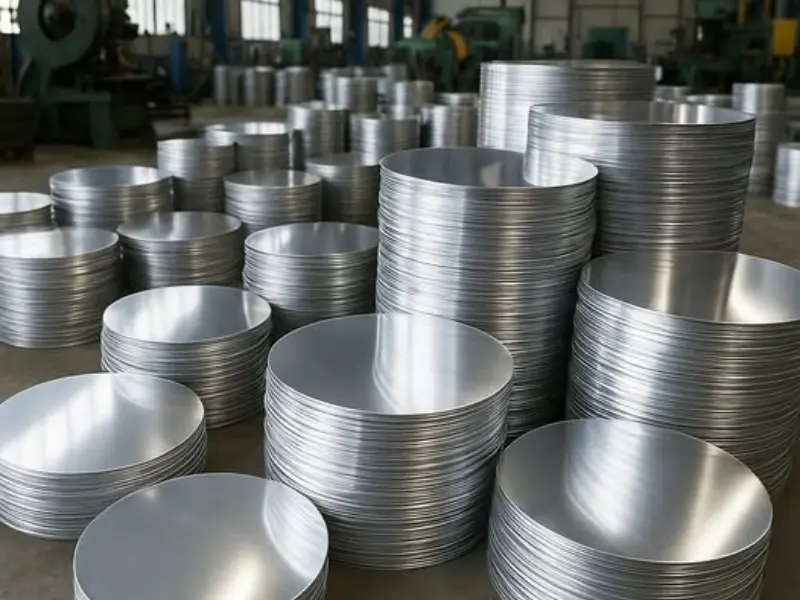
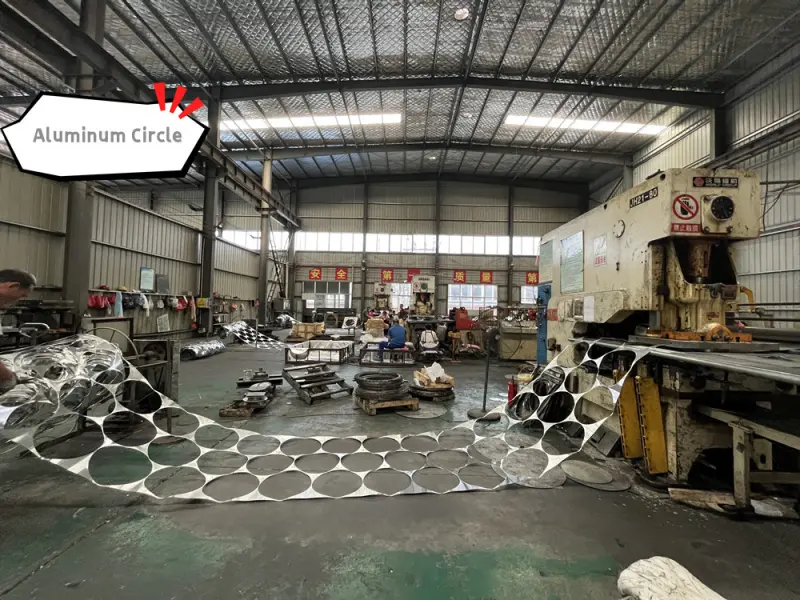
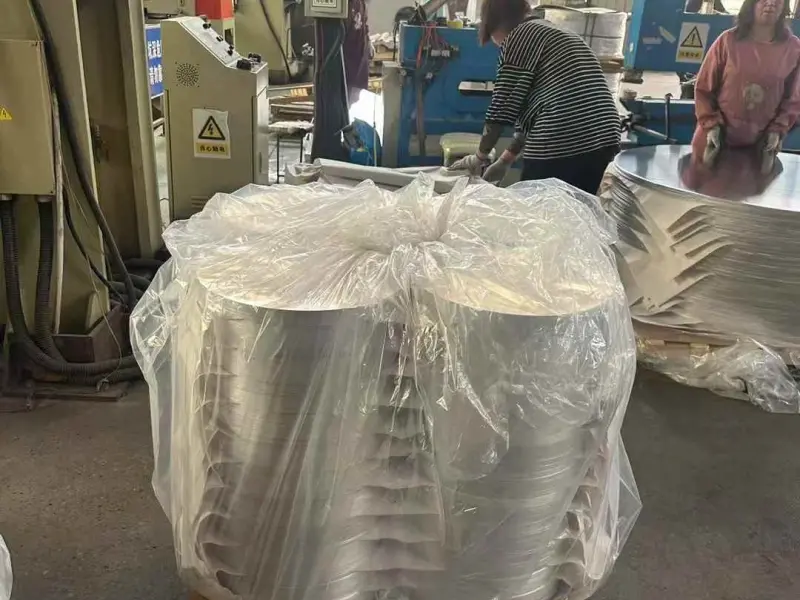
Classification of Aluminum Circle
Deep drawing aluminum discs are available in different sizes and alloys. They are mainly classified by:
- Alloy series: 1050, 1060, 1100
- Temper: O (soft), H12, H14, etc.
- Diameter range: 100mm – 1200mm
- Surface type: Mill finish, anodized, polished
Table 1: Classification
| Category | Details |
|---|---|
| Alloy Series | 1050 / 1060 / 1100 |
| Diameter | 100mm – 1200mm |
| Temper | O, H12, H14 |
| Surface Finish | Mill Finish, Anodized, Polished |
Deep drawing aluminum circles are primarily classified by their alloy, temper, and surface condition, which all impact their suitability for specific forming operations.
- By Alloy Type:
- 1050 Aluminum Circle: Best for maximum ductility.
- 1060 Aluminum Circle: Slightly higher purity, excellent formability.
- 1100 Aluminum Circle: Slightly stronger, good all-around performance for deep drawing.
- By Temper:
- “O” Temper (Annealed): This is the most common and preferred temper for deep drawing, as the material is in its softest, most ductile state, allowing for maximum deformation without cracking.
- “H” Tempers (e.g., H12, H14): These are strain-hardened tempers that offer increased strength. While possible to deep draw, they have reduced ductility compared to the “O” temper, limiting the severity of the draw.
- By Surface Finish:
- Mill Finish: The natural surface finish as it comes off the rolling mill. Suitable for many applications where the final product will be polished, coated, or hidden.
- Bright Finish: A smoother, more reflective surface often achieved through specific rolling processes, ideal for applications requiring a lustrous appearance.
- Other Finishes: Can include brushed or matte, depending on aesthetic requirements.
Thickness Options
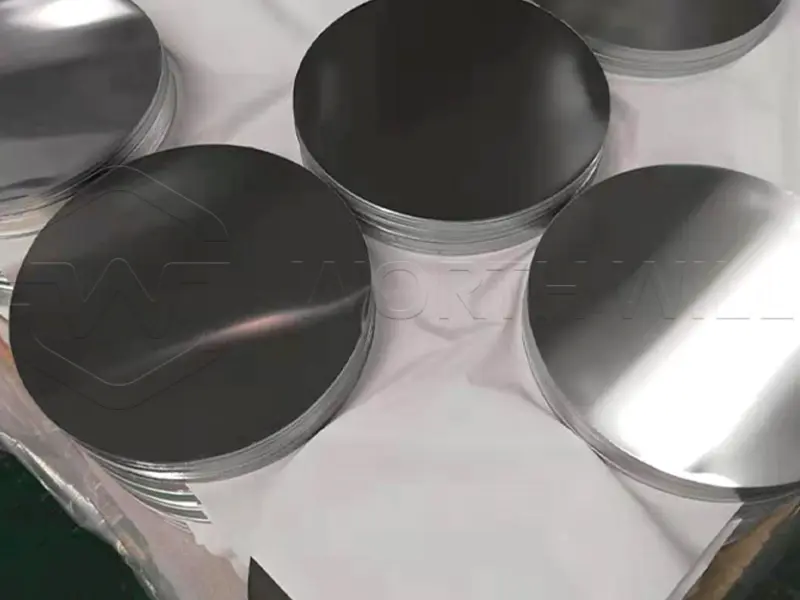
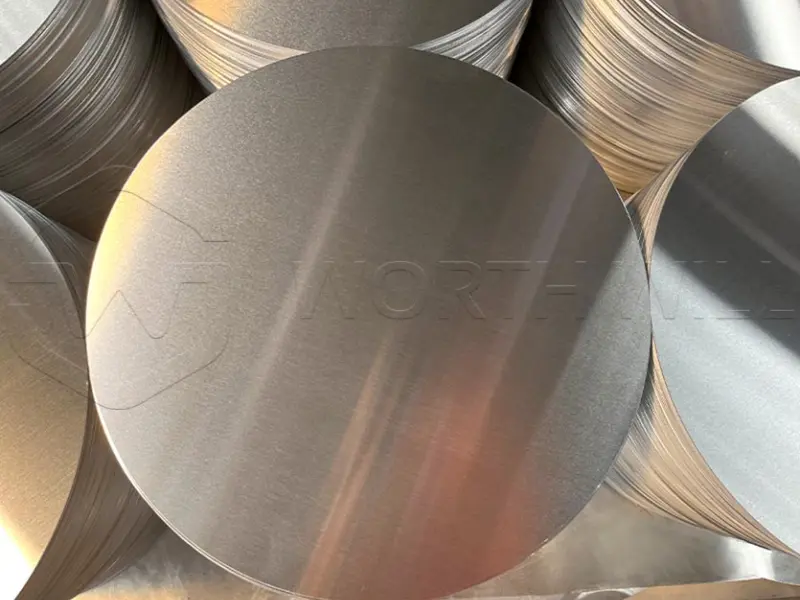
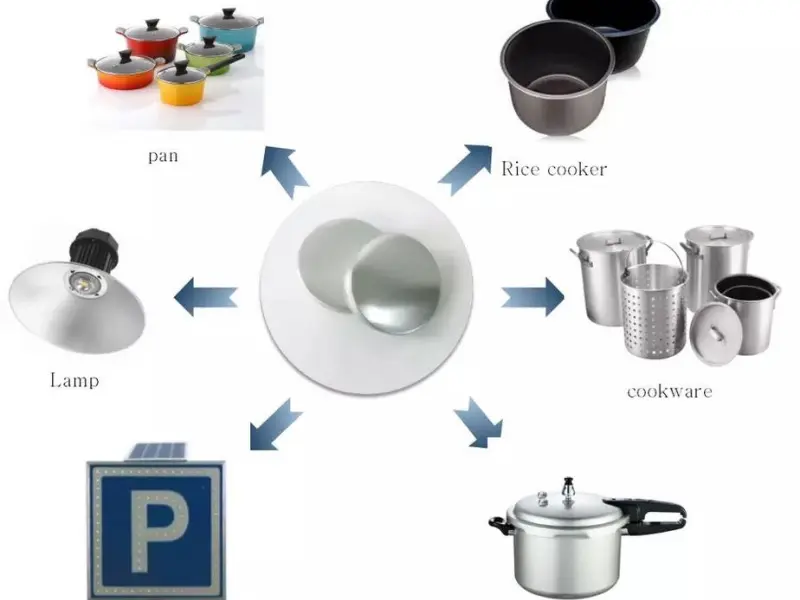
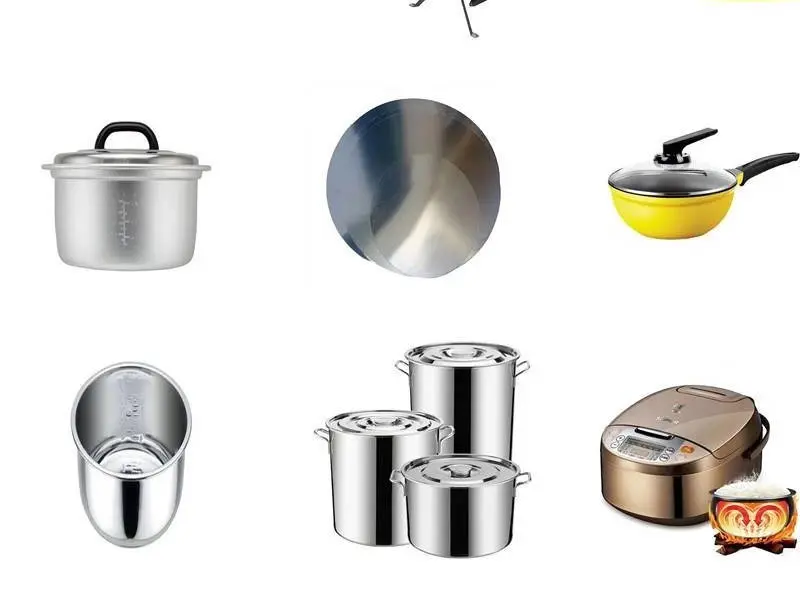
Deep drawing aluminum circles are supplied in different thicknesses to match various production needs.
Table 2: Thickness Range
| Thickness (mm) | Application Example |
|---|---|
| 0.4 – 0.8 | Lighting reflectors, kitchen lids |
| 0.9 – 1.5 | Small cookware, pans |
| 1.6 – 3.0 | Large pots, industrial parts |
| 3.1 – 6.0 | Heavy duty utensils |
Table 3: Alloy Comparison
| Alloy | Purity (%) | Strength | Ductility | Common Use |
|---|---|---|---|---|
| 1050 | 99.5 | Low | High | Cookware, lampshades |
| 1060 | 99.6 | Low | Very High | Pots, utensils, reflectors |
| 1100 | 99.0 | Medium | Good | Industrial, cookware |
Packaging of Aluminum Circles
To ensure safety during transportation, aluminum circles are packed carefully:
- Standard export wooden pallets
- Paper interleaved between circles
- Plastic film wrapping for moisture protection
- Metal strapping for secure handling
Table 4: Packaging Details
| Packaging Type | Details |
|---|---|
| Pallet Type | Wooden pallets, fumigation-free |
| Protection | Plastic film + kraft paper |
| Handling | Steel straps + corner protection |
| Export Standard | Suitable for sea and land transportation |
Applications of 1050 1060 1100 Aluminum Circle
Aluminum circles are widely used in many industries.
- Cookware: Pots, pans, frying utensils, pressure cookers
- Lighting: Lamp covers, reflectors
- Signage: Traffic signs, road safety boards
- Industrial Use: Filter housings, automotive parts
- Decorative: Household items, artistic panels
Advantages of 1050 1060 1100 Aluminum Circle
- Smooth and bright surface
- Excellent formability and elongation
- Good corrosion resistance
- Lightweight yet durable
- Suitable for anodizing and polishing
Advantages of Using 1050/1060/1100 Alloys
✅ Excellent Formability: Can be drawn to extreme depths without cracking
✅ Good Surface Quality: Smooth finish reduces post-processing needs
✅ Corrosion Resistance: Natural oxide layer protects against oxidation
✅ High Thermal Conductivity: Ideal for heat-related applications
✅ Non-Toxic Properties: Safe for food contact applications
✅ Recyclability: Environmentally friendly and sustainable
Technical Specifications Table
| Specification | 1050 | 1060 | 1100 | Testing Standard |
|---|---|---|---|---|
| Aluminum Content | 99.50% min | 99.60% min | 99.00% min | ASTM B209 |
| Iron Content | 0.40% max | 0.35% max | 0.95% max | ASTM B209 |
| Silicon Content | 0.25% max | 0.25% max | 0.95% max | ASTM B209 |
| Hardness (HV) | 20-30 | 20-30 | 25-35 | ASTM E10 |
Deep Drawing Process Parameters
| Parameter | Recommended Range | Effect on Drawing |
|---|---|---|
| Drawing Speed | 50-200 mm/sec | Higher speed = higher productivity |
| Blank Holder Force | 10-50 kN | Prevents wrinkling |
| Lubrication | Oil-based lubricants | Reduces friction and tearing |
| Die Radius | 4-8 × material thickness | Precessive tearing |
Quality Control Measures
- Dimensional Checks:
- Diameter tolerance: ±0.1mm
- Thickness tolerance: ±0.05mm
- Flatness: ≤0.5mm/300mm
- Surface Quality:
- No visible defects
- Smooth surface finish
- Uniform appearance
- Mechanical Properties:
- Tensile strength verification
- Elongation testing
- Hardness testing
Comparison with Alternative Materials
| Feature | Aluminum 1050-1100 | Stainless Steel | Copper |
|---|---|---|---|
| Formability | Excellent | Good | Excellent |
| Cost | Low | High | Very High |
| Weight | Light | Heavy | Heavy |
| Corrosion Resistance | Good | Excellent | Good |
| Thermal Conductivity | Excellent | Poor | Excellent |
Industry Standards & Certifications
FDA Approval: For food contact applications
ASTM B209: Standard specification for aluminum sheet
ISO 9001: Quality management system
RoHS Compliance: Restriction of hazardous substances
